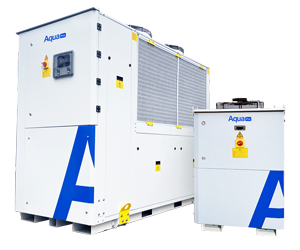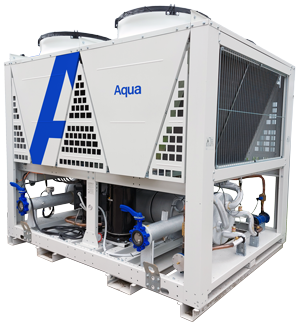Built in redundancy and energy efficiency are often key factors for clients when they’re considering upgrading their cooling equipment. This was exactly the case for a client who wanted to replace an aging air-cooled chiller system which provided hydraulic oil cooling to their manufacturing process.
Our customer is a market leading manufacturer of home appliances, including a range of washing machines and tumble dryers. In addition to being old, their existing chillers ran on R407C refrigerant, which limited their energy efficiency potential.
During the manufacturing process, our client uses a cold press to produce component parts. In very basic terms, a sheet of metal is inserted between two metal plates. A hydraulic system then creates a sheer force which presses the required shape into the metal sheet.
Our in-house design team removed 3 chiller units from the existing cooling system, replacing them with a single adiabatic cooler. One larger chiller unit was retained as a back up option. Moving to an adiabatic system meant the required cooling capacity could be achieved without the need for a refrigeration system. As well as decreasing electrical power consumption, this has the added benefit of removing moving mechanical parts, so reducing running cost and future maintenance costs.
A shell and tube heat exchanger was also included, taking the hydraulic oil one side and cooling fluid on the other.
The adiabatic cooler supplied had 5 fans, so if 1 should ever fail, the cooling function would continue unaffected. The fans can also be replaced whilst the unit is operational, so you gain built in redundancy.
The full solution included:
- 250kW adiabatic cooler with EC fans
- Shell & tube heat exchanger
- Process pumps, inverters and pressurisation unit
- Mechanical installation, pipework and commissioning
“This project is a great example of how a relatively simple system upgrade can achieve a multitude of benefits for clients. For this customer their total cost of ownership really reduced, and they gained peace of mind that their process now incorporated redundancy on the cooling side” explains Aqua Sales Manager, Shaun Lancaster.



